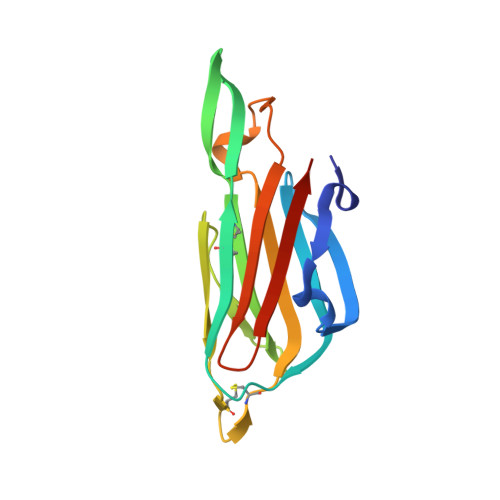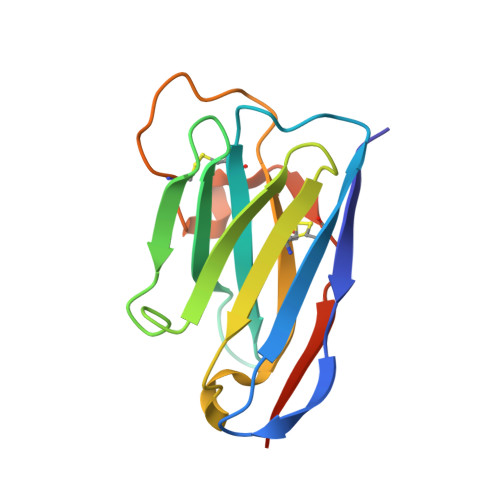Nanobody Mediated Inhibition of Attachment of F18 Fimbriae Expressing Escherichia coli.
Moonens, K., De Kerpel, M., Coddens, A., Cox, E., Pardon, E., Remaut, H., De Greve, H.(2014) PLoS One 9: e114691-e114691
- PubMed: 25502211
- DOI: https://doi.org/10.1371/journal.pone.0114691
- Primary Citation of Related Structures:
4W6W, 4W6X, 4W6Y - PubMed Abstract:
Post-weaning diarrhea and edema disease caused by F18 fimbriated E. coli are important diseases in newly weaned piglets and lead to severe production losses in farming industry. Protective treatments against these infections have thus far limited efficacy. In this study we generated nanobodies directed against the lectin domain of the F18 fimbrial adhesin FedF and showed in an in vitro adherence assay that four unique nanobodies inhibit the attachment of F18 fimbriated E. coli bacteria to piglet enterocytes. Crystallization of the FedF lectin domain with the most potent inhibitory nanobodies revealed their mechanism of action. These either competed with the binding of the blood group antigen receptor on the FedF surface or induced a conformational change in which the CDR3 region of the nanobody displaces the D″-E loop adjacent to the binding site. This D″-E loop was previously shown to be required for the interaction between F18 fimbriated bacteria and blood group antigen receptors in a membrane context. This work demonstrates the feasibility of inhibiting the attachment of fimbriated pathogens by employing nanobodies directed against the adhesin domain.
Organizational Affiliation:
Structural & Molecular Microbiology, Structural Biology Research Center, VIB, Brussels, Belgium; Structural Biology Brussels, Vrije Universiteit Brussel, Pleinlaan 2, 1050 Brussels, Belgium.
















